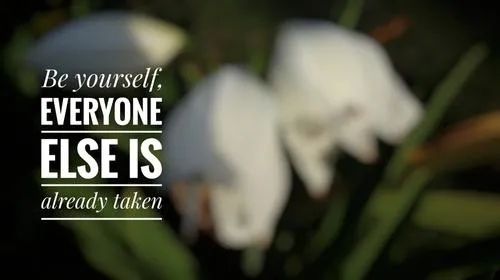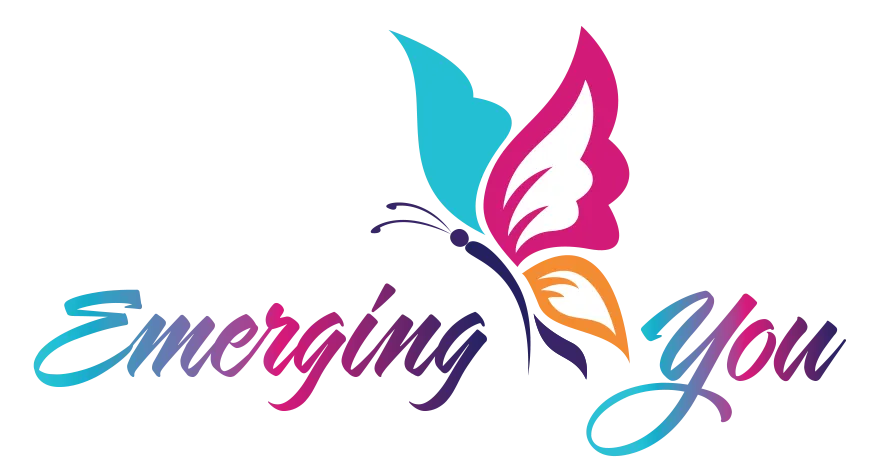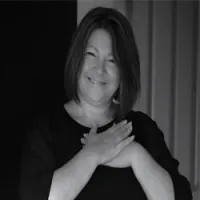Blog
Blog

You be you and I'll be me
You be you and i'll be me: Navigating Emotions and Expectations in a Noisy World
In a world where we work, live, and play among many other people, navigating the emotional landscape can often feel like stepping through a minefield. Every interaction is layered with unspoken expectations, learned behaviors, and unconscious reactions. We walk into workplaces carrying our childhood patterns. We show up in relationships with the echoes of past dynamics. And we often forget that many of our daily choices aren't really "ours"—they’re inherited, rehearsed, or reactions to avoid discomfort.
The truth is, who we are today is a combination of all the patterns we’ve absorbed over time—plus whatever conscious work we’ve done to change, disrupt, or enhance those patterns. Some of those patterns serve us beautifully. Others keep us small, reactive, and disconnected from our truth.
And when we find ourselves in a situation where we’re triggered, frustrated, over-accommodating, or shutting down, it’s worth asking:
Is this reaction coming from a place of neutrality? Or is it a defense, a protection, or an old pattern trying to keep us safe?
The Complexity of Being "You"
Sometimes, the hardest thing to do is simply be yourself—especially if you're not quite sure who that is anymore. Life moves fast. Expectations pile on. Roles shift. And somewhere in the hustle to be a good parent, a reliable friend, a high-performing employee, or a supportive partner, our sense of self gets blurry.
If you’ve ever asked yourself:
Why do I keep saying “yes” when I want to say “no”?
Why do I feel so drained after spending time with certain people?
Why do I avoid conflict—even when it hurts me?
…then you’re already waking up to how exhausting it can be to live from patterns instead of presence.
Relationship Patterns That Drain Us
Managing expectations, pleasing others, keeping quiet, overreacting, withholding communication, feeling isolated, isolating others, or using language to manipulate—these are all ways we manage relationships, often subconsciously. They’re not necessarily “bad” or “wrong,” but they can be exhausting and deeply misaligned when we’re doing them to stay liked, safe, or approved of.
These coping strategies usually begin as self-protection mechanisms. As children, many of us learned that love and safety were conditional: "Be quiet and good, and I’ll be proud of you." "Don’t cry—people don’t like that." "You’re too much." "You’re not enough."
Over time, those messages get coded into our nervous systems and become automatic behaviors. We default to shrinking, smoothing things over, or shutting down altogether—not because we’re weak, but because our systems are still trying to stay safe.
What If It Didn’t Have to Be So Hard?
Let’s pause for a moment and imagine this:
What if you didn’t have to anticipate other people’s reactions?
What if you could trust yourself to speak honestly, even if it wasn’t perfect?
What if you could walk into a room and not feel responsible for managing everyone else’s energy?
What if you could just be… you?
No masks. No shape-shifting. No hidden agenda. Just grounded, present, fully yourself.
It sounds simple. And in many ways, it is. But that simplicity often requires unlearning years of patterns and beliefs that tell us we’re only safe when we’re pleasing, perfect, or invisible.
The Power of Coming Home to Yourself
The most transformational work we can do is not in changing the world around us—it’s in coming home to ourselves. This doesn’t mean becoming selfish or disregarding others. It means learning how to feel safe in your own body, thoughts, and truth, so that you can respond to life rather than react from past wounds.
When you’re anchored in who you are:
You can set boundaries without guilt.
You can navigate discomfort without shutting down.
You can express yourself without fear of rejection.
You can see others clearly, without needing to fix or control them.
And perhaps most importantly, you feel less tired, because you're no longer performing for acceptance. You’re simply being.
Start With Awareness
So how do you get there?
It starts with awareness—slowing down enough to notice your patterns without judgment.
Next time you feel triggered, pause and ask: Is this mine? Or is this an old pattern?
When you notice yourself people-pleasing, take a breath and ask: What do I actually need right now?
If you’re isolating or withdrawing, explore gently: What am I afraid might happen if I stay connected?
Awareness leads to choice. And with choice comes freedom.
Join My Newsletter
I promise not to spam you. We value your privacy and will never share your details.

You be you and I'll be me
You be you and i'll be me: Navigating Emotions and Expectations in a Noisy World
In a world where we work, live, and play among many other people, navigating the emotional landscape can often feel like stepping through a minefield. Every interaction is layered with unspoken expectations, learned behaviors, and unconscious reactions. We walk into workplaces carrying our childhood patterns. We show up in relationships with the echoes of past dynamics. And we often forget that many of our daily choices aren't really "ours"—they’re inherited, rehearsed, or reactions to avoid discomfort.
The truth is, who we are today is a combination of all the patterns we’ve absorbed over time—plus whatever conscious work we’ve done to change, disrupt, or enhance those patterns. Some of those patterns serve us beautifully. Others keep us small, reactive, and disconnected from our truth.
And when we find ourselves in a situation where we’re triggered, frustrated, over-accommodating, or shutting down, it’s worth asking:
Is this reaction coming from a place of neutrality? Or is it a defense, a protection, or an old pattern trying to keep us safe?
The Complexity of Being "You"
Sometimes, the hardest thing to do is simply be yourself—especially if you're not quite sure who that is anymore. Life moves fast. Expectations pile on. Roles shift. And somewhere in the hustle to be a good parent, a reliable friend, a high-performing employee, or a supportive partner, our sense of self gets blurry.
If you’ve ever asked yourself:
Why do I keep saying “yes” when I want to say “no”?
Why do I feel so drained after spending time with certain people?
Why do I avoid conflict—even when it hurts me?
…then you’re already waking up to how exhausting it can be to live from patterns instead of presence.
Relationship Patterns That Drain Us
Managing expectations, pleasing others, keeping quiet, overreacting, withholding communication, feeling isolated, isolating others, or using language to manipulate—these are all ways we manage relationships, often subconsciously. They’re not necessarily “bad” or “wrong,” but they can be exhausting and deeply misaligned when we’re doing them to stay liked, safe, or approved of.
These coping strategies usually begin as self-protection mechanisms. As children, many of us learned that love and safety were conditional: "Be quiet and good, and I’ll be proud of you." "Don’t cry—people don’t like that." "You’re too much." "You’re not enough."
Over time, those messages get coded into our nervous systems and become automatic behaviors. We default to shrinking, smoothing things over, or shutting down altogether—not because we’re weak, but because our systems are still trying to stay safe.
What If It Didn’t Have to Be So Hard?
Let’s pause for a moment and imagine this:
What if you didn’t have to anticipate other people’s reactions?
What if you could trust yourself to speak honestly, even if it wasn’t perfect?
What if you could walk into a room and not feel responsible for managing everyone else’s energy?
What if you could just be… you?
No masks. No shape-shifting. No hidden agenda. Just grounded, present, fully yourself.
It sounds simple. And in many ways, it is. But that simplicity often requires unlearning years of patterns and beliefs that tell us we’re only safe when we’re pleasing, perfect, or invisible.
The Power of Coming Home to Yourself
The most transformational work we can do is not in changing the world around us—it’s in coming home to ourselves. This doesn’t mean becoming selfish or disregarding others. It means learning how to feel safe in your own body, thoughts, and truth, so that you can respond to life rather than react from past wounds.
When you’re anchored in who you are:
You can set boundaries without guilt.
You can navigate discomfort without shutting down.
You can express yourself without fear of rejection.
You can see others clearly, without needing to fix or control them.
And perhaps most importantly, you feel less tired, because you're no longer performing for acceptance. You’re simply being.
Start With Awareness
So how do you get there?
It starts with awareness—slowing down enough to notice your patterns without judgment.
Next time you feel triggered, pause and ask: Is this mine? Or is this an old pattern?
When you notice yourself people-pleasing, take a breath and ask: What do I actually need right now?
If you’re isolating or withdrawing, explore gently: What am I afraid might happen if I stay connected?
Awareness leads to choice. And with choice comes freedom.
Join My Newsletter
I promise not to spam you. We value your privacy and will never share your details.
Not sure if coaching is for you?
Would you like to tick off some of the goals/intentions you have set yourself?
Would you like to start that business venture you have always dreamed of?
Would you like to identify some of the things that are holding you back and have a strategy for dealing with them?
Or, would you just like to know yourself a little better?
If you have answered yes to any of these questions then click on the coaching information button below to take a look at what I can help you with and book a session.
Not sure if coaching is for you?
Would you like to start that business venture you have always dreamed of?
Would you like to identify some of the things that are holding you back and have a strategy for dealing with them?
Or, would you just like to know yourself a little better?
If you have answered yes to any of these questions then click on the coaching information button below and take a look at what I can help you with and book a session.

© 2020 - 2025 Emerging You Limited | All Rights Reserved | Privacy Policy | Terms | Created and managed by Emerging You
© 2020 - 2025 Emerging You Limited | All Rights Reserved | Privacy Policy | Terms | Created and managed by Emerging You








